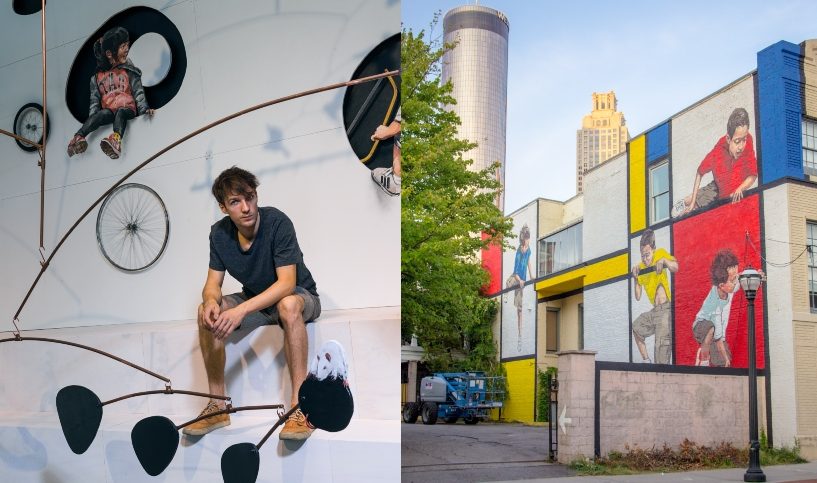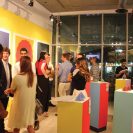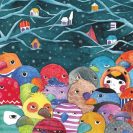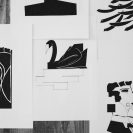Our perception of street art has gone from angst-driven acts of spray paint vandalism to an appreciated form of social commentary. And for Ernest Zacharevic this statement cannot ring truer. Hailing from Lithuania, the artist rose to fame in 2012 after his Mirrors Georgetown project in Penang, Malaysia.
His work combines fine art techniques and graffiti, and Ernest has taken it one step further by turning his installations into interactive works that take on a life of their own, being both conversational and inviting. You don’t just want to share them on your social media feeds, you want to become a protagonist in the visual story.
When one of Ernest’s friends jokingly suggested that he should include real props for his work, he employed the use of motorcycles and swings, coupled with a painted mural. The result? The public excitedly responded—they wanted to be part of the art. It is public art, after all.
Ernest’s education was in Fine Arts, but his aesthetic breaks the rules of the traditional arts while still using the techniques from different mediums to create something new but just as timeless. He looks to create art that speaks to human beings all over the globe.
As an artist, he is interested in the relationship between art and the urban landscape. He uses his work to raise awareness for issues he believes in like the Splash and Burn project. The self-initiated, ongoing project brought the unregulated Palm Oil farming practices in Indonesia, also illustrating its secondary effects such as deforestation and wildlife displacement, and how much they harm communities and the environment. He revisits this initiative in an effort to continue the great work being done to bring these issues to light.
More recently, Ernest collaborated with various artists for Brand Dubai, the creative arm of the government of Dubai’s media office and municipality to give us Dubai Street Museum, an initiative to bring more color to the facades of buildings in the emirate. The collection features visuals that draw from the country’s heritage and culture and displays them as a reminder of the city’s collective roots. We interviewed Ernest to learn out more about his creative process and thoughts.

Image courtesy of Ernest Zacharevic.
Your education is in Fine Arts, but you have chosen to pursue a career in the arts that is outside of the field’s traditional bounds. What first compelled you to do that?
Graffiti used to be my way of balancing out a rather restrictive art education that I went through as a teenager. After graduating there was no longer any pressure to my fine art practice as well as being adult, I no longer felt compelled to follow a conventional graffiti rules so eventually both practices started blending together.
How important is it to understand art theory and concepts?
I put a lot of thought into my work before I pick up the brush, however I do not expect my audience to receive every aspect of it. I try to keep my work universally relevant to the viewer regardless of their background or knowledge.
You recently unveiled some work that was done in Dubai. What was the experience like?
Making public art work in the Emirates can be really challenging due to the very conservative rules and regulations that reach every aspect of people’s life, including art. I enjoy that sometimes though, you have to be creative in trying to deliver the idea and message of the work within a very narrow frame of what is considered to be politically correct in the country.
What draws you to the use of mixed media?
Being educated in a very traditional art school taught me that art is more than just the ability to control the medium. If there is no creative thought behind the process, there is no skill level that can help to turn a picture into art. Therefore, I never limit myself by one medium or another, I try to use what is necessary to deliver the idea and what is available to me at that time.

Image courtesy of Ernest Zacharevic.
What inspired you to use real life objects with your own art?
My good friend suggested it as a joke once and I just thought it was a brilliant idea. I’ve been trained as a painter, however sculpture and other kinds of dimensional mediums have always been a big passion for me.
Splash and Burn was a collaborative project with other artists too. Do you prefer working alone or do you enjoy working with other artists?
I do enjoy my private time in the studio, but I feel it’s necessary for artists to work with other artists and people from different disciplines every once in a while. There’s is just something about sharing your ideas and process that teaches you things you can’t learn on your own.
What is the biggest difference between working alone and with others?
One thing graffiti teaches you is that you can achieve your goals faster and more efficiently working in a team.
Do you feel protective of your art or do you believe that art should be shared and built on in the future?
Working outdoors really makes you learn to let go of your art. The moment I finish my painting I consider it belonging to public.
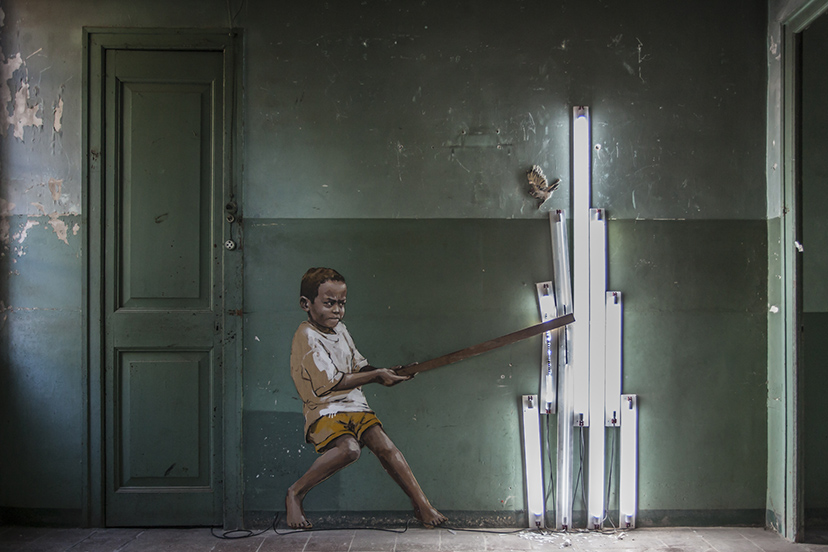
Taken by Vinny Cornelli. Image courtesy of Ernest Zacharevic.
Your installations have varied wildly. From protest/awareness pieces like Splash and Burn to the Norwegian Bubble and there has been a lot of experimentation. What has been your most pleasant surprise after an experiment?
Norwegian bubble was a very interesting case. Not a very pleasant surprise but as I was painting the piece there was a house just few blocks away that got caught on fire. It’s those weird moments of serendipity that really inspire me to keep trying new thing. No matter how weird and different it feels at the time it always connects somehow in the end.
Do you prefer being commissioned for your work, collaborating on something, or just doing something spontaneous on your own?
Definitely my own practice is something I always prefer but commissions often bring interesting challenges and opportunities, so I really don’t mind doing that every once in a while.
You have travelled the world putting up your art, how has that changed your views on art? Has working globally changed you as an artist?
I think that is what built me as an artist to start with.
You have used art as a way to raise awareness, why do you think using art and installations succeed in doing so?
Art is a powerful visual language. It works for media and government propaganda and it works just as well against it.
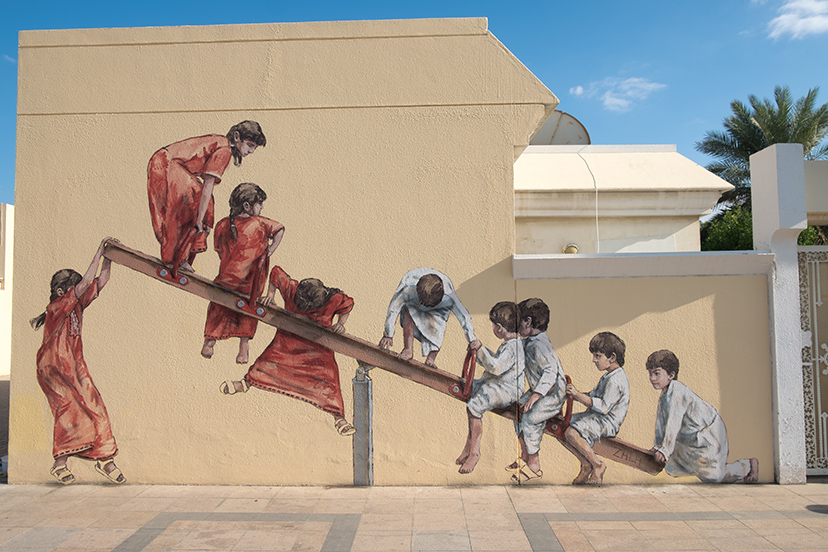
Image courtesy of Ernest Zacharevic.
People love your installations and murals; how do you want people to respond to your work?
Public reaction to my pieces can be very hard to predict sometimes. I don’t anticipate much when making my pieces. For me, it is important to keep my mind open about it.
Your entire process is on display, unlike an artist who works in the privacy of their own studio. Do you think that creating the installation is also part of your art, like a performance?
In some cases, the process is very much a part of the art. However, more often than not, I prefer my privacy even when working in public. I usually try to paint at night or during more quieter times of the day.
Which is your favorite finished installation? Which installation did you enjoy working on the most?
I don’t really have favorites across my own work. Everything I work on for the Splash and Burn project has a special place in my heart, so perhaps that is something I feel strongly about.
View this post on Instagram
Same same but different. #dubaistreetart #dubai #painting #art #publicart #ernestzacharevic
What kind of advice would you give to aspiring artists?
The biggest mistake that artists do in their careers is when they stop making art. Normally, art does not bring much of a financial return or otherwise for the first ten years of your career or so. It is important to stay motivated and keep up the practice.
What project would you love to do in the future?
I try to keep my ambitions realistic. Most of the time, my dream project is the one I am working on already. I always get immersed in it and hardly plan anything else until I’m done with it.
Any future upcoming plans we can share with our readers?
I’m currently working a lot in the studio in anticipation of my solo show next year. After that, I plan to get back to the Splash and Burn project. The impact of the palm oil industry on the planet right now is worse than ever before and it is necessary to address it in every way we can. We have great plans and ambitions for the project, but it is still a little early to give out details.
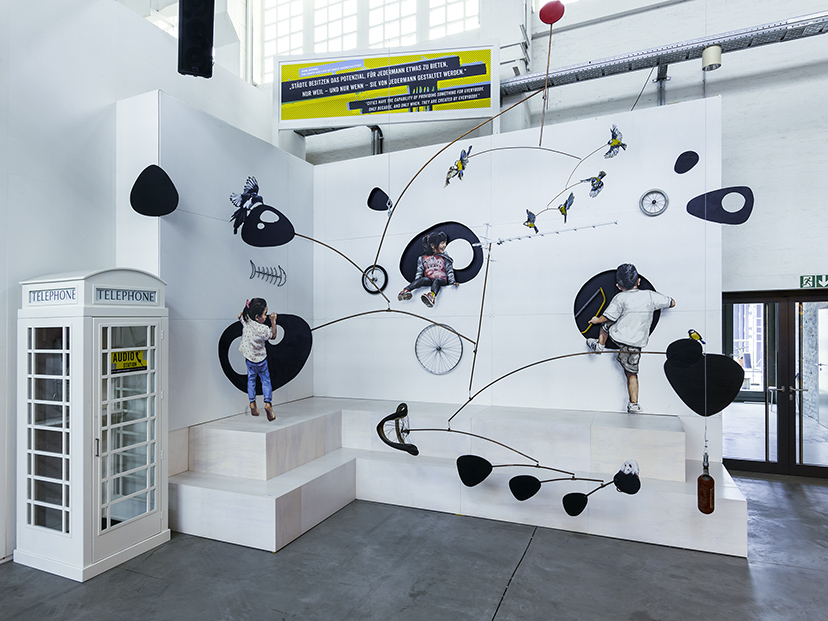
Taken by Rainer Christian. Image courtesy of Ernest Zacharevic.
To see more of Ernest’s work, follow him on Instagram @ernestzacharevic or visit www.ernestzacharevic.com. Images courtesy of Ernest Zacharevic.
Featured image by Rainer Christian and Ernest Zacharevic.



